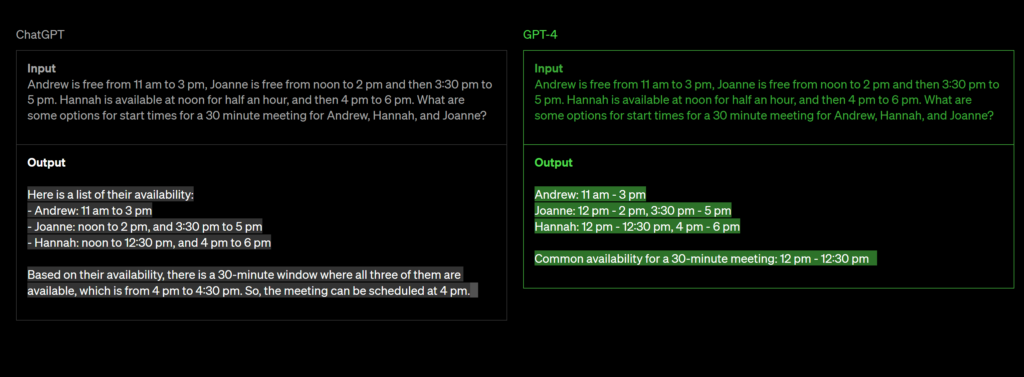ChatGPT
In the fast-paced world of artificial intelligence, advancements are being made at an astonishing rate. OpenAI’s ChatGPT has been at the forefront of the conversational AI revolution, enabling human-like interactions and generating coherent responses. With each new iteration, OpenAI brings us closer to more sophisticated language models. In this blog, we’ll delve into the exciting developments that distinguish ChatGPT-4 from its predecessor, ChatGPT-3.
- Enhanced Training Methodology: One of the fundamental differences lies in the training methodology employed for ChatGPT-4. While ChatGPT-3 was trained using Reinforcement Learning from Human Feedback (RLHF), ChatGPT-4 takes a significant leap forward by utilizing a new approach called Multimodal Deep Reinforcement Learning from Human Feedback (MDRLHF). This updated training methodology allows ChatGPT-4 to leverage both text-based and image-based data during its training, resulting in a more versatile and context-aware conversational agent.
- Expanded Contextual Understanding: ChatGPT-4 exhibits a notable improvement in its contextual understanding. It excels at capturing nuances and maintaining a coherent conversation over extended exchanges. This development enables users to engage in more complex discussions, making the interactions feel even more natural and human-like.
- Improved Response Consistency: Addressing one of the limitations of its predecessor, ChatGPT-4 showcases enhanced response consistency. While ChatGPT-3 occasionally produced varying answers to the same input, ChatGPT-4 demonstrates more reliable and consistent responses, minimizing the occurrence of contradictory or confusing replies. This improvement contributes to a more reliable and satisfactory user experience.
- Reduced Bias and Controlled Outputs: OpenAI has made considerable strides in mitigating bias in ChatGPT-4. The model has undergone intensive fine-tuning to minimize instances of biased or inappropriate responses. Moreover, ChatGPT-4 enables users to have better control over the AI’s behavior by allowing them to specify the desired outcome. This feature empowers users to guide the AI’s responses within certain boundaries, fostering more personalized and responsible interactions.
- Larger Scale and Broadened Knowledge Base: ChatGPT-4 benefits from an expanded training dataset, incorporating a wider range of topics and domains. By exposing the model to a more diverse and extensive knowledge base, it possesses a broader understanding of various subjects. Consequently, ChatGPT-4 can engage in discussions spanning multiple domains, providing accurate information and insights across a wide range of topics.
- Enhanced Creativity and Storytelling: Building upon the narrative abilities of ChatGPT-3, ChatGPT-4 exhibits enhanced creative writing skills. It can now craft captivating stories, generate imaginative scenarios, and provide engaging narratives that captivate users. This improvement opens up possibilities for interactive storytelling, gaming, and other creative applications that rely on compelling AI-generated content.
Conclusion: OpenAI’s ChatGPT-4 marks a significant advancement in conversational AI, surpassing the capabilities of its predecessor, ChatGPT-3, in several key areas. With a more robust training methodology, improved contextual understanding, enhanced response consistency, reduced bias, and broader knowledge base, ChatGPT-4 pushes the boundaries of what’s possible in AI-driven conversations. As OpenAI continues to refine and innovate, we can eagerly anticipate even more remarkable developments in the future of conversational AI.

